The Cult in Shiloh during the Roman-Byzantine Period
Abstract
:1. Introduction
This is what happened in significant places such as Jerusalem, which maintained its sacred status among Christians and Muslims, as well as in less significant places such as the point where the Israelites crossed the Jordan (for other examples see Klein 1933). This is also what occurred in Shiloh. The special significance of the site in the Biblical period as the location of the Tabernacle perpetuated the site’s sacred status in later generations as well, when it no longer housed the Ark of the Covenant and the Tabernacle moved on to another location.It is a well-known phenomenon, that places of pilgrimage maintain their sacred status even after shifts in the owners’ faith. In Jerusalem, pagan holy sites became Jewish holy sites, which subsequently became sites holy to Christianity and Islam. Unlike other places, where as a result of the changing religious hegemony a sacred tradition was replaced by a new tradition, Christianity did not dismiss the previous traditions, rather it preserved them while adding its own interpretation.
2. Shiloh in the Roman Period—‘The Scent of the Incense from between Its Walls’
The Onomasticon was compiled in the eighth decade of the 3rd century AD and belongs in fact to the late Roman period (Eusebius 2005, preface, p. XV).7 The main innovation contained in the information provided by Eusebius appears to pertain to the location of Shiloh relative to the city of Shechem.8 Furthermore, this testimony continues the biblical tradition whereby Shiloh was the place where the ark was stationed, a statement that accompanied the site’s Christian characterization. Eusebius’ testimony also contributed to the future identification of the site at Khirbet Seilun.In tribe of Ephraim. The ark remained here previously until the time of Samuel (1 Sam 4:3). It is twelve miles from Neapolis in Akrabattine. One of the sons of the Judah the Patriarch was also called Shelah (we read).(Onomasticon 156: 28. The translation from Eusebius 2005, p. 147)
3. Shiloh in the Byzantine Period—The Ruined Altar
3.1. The Historical Sources
Hence, Jerome mentioned the ruined altar, but did not mention a church. Where Eusebius reported that Shiloh is the place where the ark was stationed according to the Bible, Jerome added the element of the altar, and his testimony that the altar was ruined is particularly important. Jerome seems to have hinted at Jeremiah’s prophecy, on which we will expand below: ‘But go ye now unto my place which was in Shiloh, where I set my name at the first, and see what I did to it for the wickedness of my people Israel’ (Jer. 7 12), i.e., the ruined altar is proof of the bad deeds of the Israelites and indicates the triumph of Christianity over Judaism.What shall I say of Shiloh. Its ruined altar can still be seen, and it is the place where the tribe of Benjamin foreshadowed Romulus and the rape of the Sabine women13.(Wilkinson 1977, p. 51; For the Latin source see Jerome 1912, Epistula 108, p. 322)
In other words, Jerome saw Shiloh as a mark of Christianity’s triumph over Judaism. This description also shows that in the time of Jerome churches had already been built in these places.…accompanied by Christ, we shall have made our way back through Shiloh and Bethel, and those other places where churches are set up like standards to commemorate the Lord’s victories.
This is also the place to note that Jerome mentioned the ‘ruined temple’ in his writings no less than 18 times as proof of the victory of Christianity over the Jews (Newman 1997, pp. 226–29), and the case of Shiloh appears to join these. This claim is evident from Jerome’s interpretation of Jeremiah 7:12, where he wrote:… There is no point in discussing that which is obvious, namely, that what was most precious has now become a ruin, and the temple that was famous all over the world has become the garbage dump of the new city… and the temple has become an owl’s nest
The destruction of Jerusalem clearly symbolizes the ‘triumph of God’, i.e., of Christianity, over Judaism, and this is thought to be the reason that the Temple Mount was left in ruins in the Byzantine period (Limor 2014, p. 31). If so, this was true of Shiloh too, and the destruction of the Tabernacle was a prototype of the destruction of the Temple, from which the Israelites could have learned a lesson, but did not do so.He draws from the past in order to teach in the present. To those who say “this is the temple of the lord, the temple of the lord, the temple of the lord” and who delight in the splendor of this costly edifice, he recounts the historia of Shiloh where the tabernacle of god first resided. It is also written about it in the psalm: “he forsook his dwelling at Shiloh”. Just as that place was reduced to ruin and ashes so also the temple will come to ruin, since it is the adobe of similar sins. Therefore, just as Shiloh was an example of the temple, so also the temple should be an example to us, when we come to the time of this testimony: “when the son of man comes will he find faith on the earth”
3.2. The Archeological Finds
4. Discussion
The map of the holy places for Christianity is comprised of places associated with the biblical past, now perceived as a Christian past, and places associated with the fundamental Christian story but mentioned in the Old Testament, which had now been baptized without eliminating their historical content. Places mentioned in the New Testament are added. In the period under discussion, pilgrims visited places associated with the biblical past and those associated with the Christian past with the same devotion.
5. Conclusions
Author Contributions
Funding
Conflicts of Interest
References
- Abu al-Fath, al-Samiri. 1985. The Kitab al-tarikh of Abu ’l-Fath. Translated by Paul Stenhouse. Sydney: University of Sydney Press. [Google Scholar]
- Aharonovich, Yevgeni, Aharon Tavger, and Dvir Raviv. 2016. Archaelogical Survey of Iron Age Sites along the Main Highway West of Shiloh and a Note on the Identification of Micha’s House. In the Hiighland’s Depht 6: 15–38. [Google Scholar]
- Ahituv, Shmuel. 1976. Shiloh in Encyclopaedia Biblica. Edited by Chaim Tadmor. Jerusalem: Bialik Institute, vol. 7, pp. 626–32. (In Hebrew) [Google Scholar]
- Andersen, Flemming Gorm. 1985. Shiloh: The Danish Excavations at Tall Sailun, Palestine, in 1926, 1929, 1932 and 1963, vol. II: The Remains from the Hellenistic to the Mamluk Periods. Copenhagen: National Museum of Denmark. [Google Scholar]
- Atzmon, Vered. 1997. Traditions and Sites in the Itineraries of the Christians Pilgrims to the Holy Land in the Byzantines and Crusaders Eras. Master’s thesis, Bar-Ilan University, Ramat Gan, Israel. unpublished. (In Hebrew). [Google Scholar]
- Avi-Yonah, Michael. 1954. The Madaba Mosaic Map with Introduction and Commentary. Jerusalem: Israel Exploration Society. [Google Scholar]
- Bar, Doron. 2003. The Christianisation of Rural Palestine During Late Antiquity. Journal of Ecclesiastical History 54: 401–21. [Google Scholar] [CrossRef]
- Bar, Doron. 2008. ‘Fill the Earth’: Settlement in Palestine during the Late Roman and Byzantine Periods 135–640 c.e. Jerusalem: Yad Ben Zvi. (In Hebrew) [Google Scholar]
- Bar, Doron. 2011. Urban Churches in Late Antiquity Palestine. In A city Reflected Through its Research: Historical-Geographical Studies of Jerusalem. Edited by Cobi Cohen-Hattab, Assaf Selzer and Doron Bar. Jerusalem: Magness Press, pp. 1–24. [Google Scholar]
- Benoit, Pierre, Józef Tadeusz Milik, and Roland de-Vaux. 1961. Discoveries in the Judaean Desert, Vol. 2: Les Grottes de Muraba’at. Oxford: Claredon Press. [Google Scholar]
- Ben-Pechat, Malka. 1989. The Paleochristian baptismal Fonts in the Holy Land: Formal and Functional Study. Liber Annuus 39: 165–88. [Google Scholar]
- Braslvsky, Joseph. 1954. Studies in Our Country Its Past and Remains. Tel-Aviv: HaKibbutz HaMeuchad. (In Hebrew) [Google Scholar]
- Buhl, Marie-Louise, and Svend Holm-Nielsen. 1969. Shiloh: The Danish Excavations at Tall Sailun, Palestine, in 1926, 1929, 1932 and 1963, Vol. 1: The Pre-Hellenistic Remains. Copenhagen: National Museum of Denmark. [Google Scholar]
- Campbell, Mary B. 1988. The Witness and the Other World: Exotic European Travel Writing, 400–1600. Ithaca: Cornell University Press. [Google Scholar]
- Conder, Claude Reignier, and Horatio Herbert Kitchner. 1882. The Survey of Western Palestine. Vol. 2: Samaria. London: Committee of the Palestine Exploration Fund. [Google Scholar]
- Dadon, Michael. 2012. The “Basilica Church” at Shiloh. In Christians and Christianity, Vol. 3: Churches and Monasteries in Samaria and Northern Judea; Edited by Noga Carmin. Jerusalem: Israel Antiquities Authority, pp. 223–34. [Google Scholar]
- Di Segni, Leah. 2012a. Greek Insciptions from early Northern Church at Shiloh and the Baptistery. In Christians and Christianity, Vol. 3: Churches and Monasteries in Samaria and Northern Judea; Edited by Noga Carmin. Jerusalem: Israel Antiquities Authority, pp. 209–18. [Google Scholar]
- Di Segni, Leah. 2012b. Greek inscriptions from the late Northern Church at Shiloh. In Christians and Christianity, Vol. 3: Churches and Monasteries in Samaria and Northern Judea; Edited by Noga Carmin. Jerusalem: Israel Antiquities Authority, pp. 219–22. [Google Scholar]
- Egeria. 1981. Egeria’s Travels to the Holy Land. Translated by John Wilkinson. Jerusalem: Ariel Publishing House, Warminster: Aris & Phillips. [Google Scholar]
- Elitsur, Yoel. 1984. Sources of the “Nebi-Samuel” Tradition. Cathedra 31: 75–90. (In Hebrew). [Google Scholar]
- Eusebius. 1999. Life of Constantine. Translated by Averil Cameron, and Stuart Hall. Oxford: Claredon Press. [Google Scholar]
- Eusebius. 2003. The Onomasticon. Translated and Edited by Freeman-Grenville, Greville Stewart Parker, Rupert L. Chapman and Joan E. Taylor. Jerusalem: Carta. [Google Scholar]
- Eusebius. 2005. Onomasticon: The Place Names of Divine Scripture. Translated by Steven R. Notley, and Ze’ev Safrai. Boston: Brill. [Google Scholar]
- Finkelstein, Israel. 1993. Shiloh. In The New Encyclopedia of Archaeological Excavations in the Holy Land. Edited by Ephraim Stern. Jerusalem: Israel Exploration Society, vol. 4, pp. 1364–70. [Google Scholar]
- Finkelstein, Israel, Shlomo Bunimovitz, and Zvi Lederman. 1993. Shiloh: The Archaeology of a Biblical Site. Tel Aviv: Institute of Archaeology, Tel Aviv University. [Google Scholar]
- Friedheim, Emmanuel. 2003. The Worship of Tyche in the Land of Israel during the Roman Period: A Study in Historical Geography. Jerusalem and Eretz Israel 1: 47–85. (In Hebrew). [Google Scholar]
- Gevaryahu, Chaim. 1968. Shilo’s Tabernacle. Machanayim 116: 152–61. (In Hebrew). [Google Scholar]
- Grabois, Ariyeh. 1986. Attachment and Alienation of the Pilgrims to the Holy Land during the Period of the Crusades. Cathedra 41: 38–45. (In Hebrew). [Google Scholar]
- Hare, Douglas Robert Adams. 1985. The lives of the prophets. In The Old Testament Pseudepigrapha. Vol. 2: Expansions of the “Old Testament” and Legends, Wisdom and Philosophical Literature, Prayers, Psalms, and Odes, Fragments of Lost Judeo-Hellenistic Works. Edited by James H. Charleswort. Garden City: Doubleday, pp. 379–99. [Google Scholar]
- Harper, Richard P., and Denys Pringle. 2000. Belmont Castle: The Excavation of a Crusader Stronghold in the Kingdom of Jerusalem. Oxford: Published for Council for British Research in the Levant by Oxford University Press. [Google Scholar]
- Herman, Geoffrey. 2005. The Exilarchate in the Sasanian Era. Ph.D. thesis, Hebrew University, Jerusalem, Israel. unpublished. (In Hebrew). [Google Scholar]
- Herman, Geoffrey. 2012. A Prince Without a Kingdom: The Exilarch in the Sasanian Era. Tubingen: Mohr Siebeck. [Google Scholar]
- Hizmi, Hananya, and Michael Rabbi Haber. 2014. Tel Shiloh Excavations: A Preliminary Review of the 2011 Season in Area N1. Judea and Samaria Research Studies 23: 99–112. (In Hebrew). [Google Scholar]
- Hunt, E. David. 1982. Holy Land Pilgrimage in the Later Roman Empire, AD 312–460. Oxford: Claredon Press. [Google Scholar]
- Ilan, Zvi. 1991. Ancient Synagogues in Israel. Tel-Aviv: Security Office Press. (In Hebrew) [Google Scholar]
- Itah, Michel, and Yuval Baruch. 2001. Archaeological Survey of the Remains of Byzantines Churches in the Land of Benjamin. Judea and Samaria Research Studies 10: 159–70. (In Hebrew). [Google Scholar]
- Jeremias, Joachim. 1958. Heiligengräber in Jesu Umwelt (Mt. 23, 29; Lk. 11, 47): Eine Untersuchung zur Volksreligion der Zeit Jesu. Göttingen: Vandenhoeck and Ruprecht. [Google Scholar]
- Jerome. 1910. Epistula 46: Paulae et Eustochiae ad Marcellam. In S. Eusebii Hieronymi Opera. Edited by Isidorus Hilberg. Pars 1: Epistulae I-LXX. Vindobonae: Verlag der Österreichischen Akademie der Wissenschaften, pp. 329–44. [Google Scholar]
- Jerome. 1912. Epistula 108: Epitaphium Sanctae Paulae. In Eusebii Hieronymi Opera. Edited by Isidorus Hilberg. Pars 2: Epistulae LXXI-CXX. Vindobonae: Verlag der Österreichischen Akademie der Wissenschaften, pp. 306–51. [Google Scholar]
- Jerome. 1963. S. Hieronymi Presbyteri Opera, Part 2: Commentariorum in Esaiam Libri XII-XVIII. Edited by Marcus Adriaen. Turnhout: Brepols. [Google Scholar]
- Jerome. 1970. Commentariorum in Sophoniam. In S. Hieronymi Presbyteri Opera, Part 6: Commentarii in Prophetas. Edited by Marcus Adriaen. Minores: Turnholti, pp. 655–711. [Google Scholar]
- Jerome. 2011. Commentary on Jeremiah. Translated by Michael Graves. Downers Grove: IVP Academic. [Google Scholar]
- Kjaer, Hans. 1930. The Excavation of Shilo: The Place of Eli and Samuel. Jerusalem: Beyl-Ul-Makdes Press, Copenhagen: Andr. Fr. Host. [Google Scholar]
- Kjaer, Hans. 1931. Shiloh a Summary Report of the Second Danish Expedition 1929. Palestine Exploration Fund Quarterly Statement 63: 71–88. [Google Scholar] [CrossRef]
- Klein, Shmuel. 1933. The itinerary ITINERARIUM BURDIGALENSE on Eretz Israel. Measeph Zion 6: 12–38. (In Hebrew). [Google Scholar]
- Klein, Eitan. 2009. Jewish Population in the District of Akraba during the Second Temple Period–the Archaeological Foundation. Judea and Samaria Research Studies 18: 177–200. (In Hebrew). [Google Scholar]
- Klein, Eitan. 2010. The Origins of the Rural Settlers in Judean Mountains and Foothills during the Late Roman Period. New Studies on Jerusalem 16: 321–50. (In Hebrew). [Google Scholar]
- Klein, Eitan. 2011. Aspects of the Material Culture of Rural Judea During the Late Roman Period (135–324 C.E.). Ph.D. thesis, Bar-Ilan University, Ramat Gan, Israel. unpublished. (In Hebrew). [Google Scholar]
- Limor, Ora. 1996. Christian Tradition, Jewish Authority. Cathedra 80: 31–62. (In Hebrew). [Google Scholar]
- Limor, Ora. 1998a. Holy Land Travels: Christian Pilgrims in Late Antiquity. Jerusalem: Yad Ben Zvi. (In Hebrew) [Google Scholar]
- Limor, Ora. 1998b. Jewish Prophets and Christian Saints. Cathedra 87: 169–74. (In Hebrew). [Google Scholar]
- Limor, Ora. 2014. Holy places and Pilgrimag: The Terms of the Discussion. In Pilgrimage: Jews, Christians, Moslems. Edited by Ora Limor, Elchanan Reiner and Miriam Frenkel. Raanana: The Open University of Israel, pp. 13–42. (In Hebrew) [Google Scholar]
- Livyatan-ben-Aryeh, Reut, and Hananya Hizmi. 2014. The Excavations at the Northern Platform of Tel Shiloh for the 2012–13 Seasons. Judea and Samaria Research Studies 23: 113–30. (In Hebrew). [Google Scholar]
- Luria, Benzion. 1947. Regions in Homeland. Jerusalem: Kiryat Sefer. (In Hebrew) [Google Scholar]
- Magen, Yitchak. 1988. The Stone Vessel Industry in Jerusalem in the Second Temple Period. Jerusalem: Society for the Protection of Nature. (In Hebrew) [Google Scholar]
- Magen, Yitchak. 2002. The Areas of Samaritan Settlement in the Roman-Byzantine period. In The Samaritans. Edited by Ephraim Stern and Hanan Eshel. Jerusalem: Yad Ben Zvi, pp. 245–71. (In Hebrew) [Google Scholar]
- Magen, Yitchak. 2008a. The Samaritans and the Good Samaritan; Jerusalem: Israel Antiquities Authority.
- Magen, Yitchak. 2008b. Late Roman Fortresses and Towers in the Southern Samaria and Northern Judea. In Judea and Samaria: Researches and Discoveries; Edited by Yitchak Magen. Jerusalem: Israel Antiquities Authority, pp. 177–216. [Google Scholar]
- Magen, Yitchak. 2009. Flavia Neapolis: Shechem in the Roman Period; Jerusalem: Israel Antiquities Authority.
- Magen, Yitchak. 2012. Christianity in Judea and Samaria in the Byzantine period. In Christians and Christianity, Vol. 1: Corpus of Christian Sites in Samaria and Northern Judea; Edited by Ayelet Hashahar Malka. Jerusalem: Israel Antiquities Authority, pp. 1–92. [Google Scholar]
- Magen, Yitchak, and Evgeny Aharonovich. 2012. The Northen Churches at Shiloh. In Christians and Christianity, Vol. 3: Churches and Monasteries in Samaria and Northern Judea; Edited by Noga Carmin. Jerusalem: Israel Antiquities Authority, pp. 161–208. [Google Scholar]
- Margalioth, Mordechai. 1995. Encyclopedia of Talmudic and Geonic Literature. Tel Aviv: Yavne. (In Hebrew) [Google Scholar]
- Mayerson, Philip. 1987. Palaestina Tertia—Pilgrims and Urbanization. Cathedra 45: 19–40. (In Hebrew). [Google Scholar]
- Newman, Hillel. 1997. Jerome and the Jews. Ph.D. thesis, Hebrew University, Jerusalem, Israel. unpublished. (In Hebrew). [Google Scholar]
- Prawer, Jehoshua. 1986. The Hebrew itineraries of the crusader period. Cathedra 40: 31–62. [Google Scholar]
- Prawer, Jehoshua. 1987. Jerusalem in the Christian perspective of the Early Middle Ages. In The History of Jerusalem: The Early Islamic Period (638–1099). Edited by Jehoshua Prawer. Jerusalem: Yad Ben Zvi, pp. 249–82. (In Hebrew) [Google Scholar]
- Reeg, Gottfried. 1989. Die Ortsnamen Israels nach der Rabbinischen Literatur. Wiesbaden: L. Reichert. [Google Scholar]
- Reiner, Elchanan. 1988. Pilgrims and Pilgrimage to Eretz Yisrael, 1099–517. Ph.D. thesis, Hebrew University, Jerusalem, Israel. unpublished. (In Hebrew). [Google Scholar]
- Robinson, Edward, and Eli Smith. 1856. Biblical Researches in Palestine and the Adjacent Regions, A Journal of the Travels in the Year 1838. London: J. Murray, vol. 3. [Google Scholar]
- Safrai, Ze’v. 1987. Graves of the Righteous and Holy Places in Jewish Tradition. In Zev Vilnay’s Jubilee. Edited by Eli Schiller. Jerusalem: Ariel, vol. 2, pp. 303–13. (In Hebrew) [Google Scholar]
- Safrai, Ze’v. 1998. The institutionalization of the Cult of Saints in Christian Society. In Sanctity of Time and Space in Tradition and Modernity. Edited by Alberdina Houtman, Marcel Poorthuis and Jehoshua Schwartz. Leiden: Brill, pp. 193–214. [Google Scholar]
- Saradi-Mendelovici, Helen. 1990. Christian Attitudes toward Pagan Monuments in Late Antiquity and Their Legacy in Later Byzantine Centuries. Dumbarton Oaks Papers 44: 47–61. [Google Scholar] [CrossRef]
- Sar-avi, Doron. 2002. Toponymes Mentioned in the Documents Dated to the Roman Period, Discovered in the Judaean Desert. Master’s thesis, Bar-Ilan University, Ramat Gan, Israel. unpublished. (In Hebrew). [Google Scholar]
- Satran, David. 1995. Biblical Prophets in Byzantine Palestine: Reassessing the Lives of the Prophets. Leiden: E.J. Brill. [Google Scholar]
- Shemesh, Abraham Ofir. 2017. The Fragrance of Paradise: Scents, Perfumes and Incense in Jewish Tradition. Ramat Gan: Bar-Ilan University. (In Hebrew) [Google Scholar]
- Sion, Ofer. 2001. Settlement History in the Central Samarian Region in the Byzantine Period. Ph.D. thesis, Hebrew University, Jerusalem, Israel. unpublished. (In Hebrew). [Google Scholar]
- Stern, Menachem. 1968. The Description of Palestine by Pliny the Elder and the Administrative Division of Judea at the End of the Period of the Second Temple. Tarbiz 37: 215–29. (In Hebrew). [Google Scholar]
- Taylor, Joan E. 1993. Christians and the Holy Places: The Myth of Jewish-Christian Origins. Oxford: Claredon Press. [Google Scholar]
- Tsafrir, Yoram, Leah Di Segni, and Judith Green. 1994. Tabula Imperii Romani: Iudaea Palaestina: Eretz Israel in the Hellenistic, Roman and Byzantine Periods: Maps and Gazetteer. Jerusalem: Israel Academy of Sciences and Humanities. [Google Scholar]
- Turner, Victor, and Edith Turner. 1978. Image and Pilgrimage in Christian Culture: Anthropological Perspectives. New York: Columbia University Press. [Google Scholar]
- van der Horst, Pieter Willem. 2002. The Tombs of the Prophets in Early Judaism. In Japheth in the Tents of Shem: Studies on Jewish Hellenism in Antiquity. Edited by Pieter Willem van der Horst. Leuven: Peeters, pp. 119–37. [Google Scholar]
- Wilkinson, John. 1977. Jerusalem Pilgrims Before the Crusades. Warminster: Aris & Phillips. [Google Scholar]
- Wilkinson, John. 1990. Jewish Holy Places and the Origins of Christian Pilgrimage. In The Blessings of Pilgrimage. Edited by Robert Ousterhout. Urbana Illinois: University of Illinois Press, pp. 41–53. [Google Scholar]
- Zissu, Boas. 2001. Rural Settlement in the Judaean Hills and Foothills from the Late Second Temple Period to the Bar Kokhba Revolt. Ph.D. thesis, Hebrew University, Jerusalem, Israel. unpublished. (In Hebrew). [Google Scholar]
- Zissu, Boas. 2006. “A City Whose House-Roofs Form its City Wall”, and “a City that was not Encompassed by a Wall in the Days of Joshua Bin Nun”—According to Archaeological Finds from Judea. Judea and Samaria Research Studies 15: 85–100. (In Hebrew). [Google Scholar]
| 1 | A short excavation season also took place in 1964 towards publication of the report. |
| 2 | On Shiloh in the Biblical period, as the location of the Tabernacle and a center for the convergence of the Israelite tribes, see (Ahituv 1976). |
| 3 | Shiloh is also mentioned in the Babylonian Talmud in the context of the permit to utilize High places (‘bamot’) for religious purposes (b. Zeb. 119a). With regard to the quote: ‘If one had a protracted issue of matter from his body, lasting as long as three normal issues, which is equivalent to the time of walking from Gadyawan to Shiloh…’ (b. Sanh. 63b), it appears that the word ‘Shiloh’ should be corrected to ‘Shiloah’, as in the Mishna (m. Zab. 1:5), and see (Friedheim 2003, p. 64, note 5). |
| 4 | According to the Ba’alei Hatosafot, this may refer to R. Akiva’s son (b. Ber. 58a, s.v. ‘except for the bald one’). |
| 5 | This was already proposed by the PEF researchers (Conder and Kitchner 1882, p. 299). |
| 6 | Pliny the Elder indeed mentions Aqrabta as one of the ten toparchies in his Naturalis Historiae (Pliny NH 5, 70), as does Josephus (War III.54–55). |
| 7 | Joan Taylor thought that the treatise was in fact written in the first quarter of the fourth century. See (Eusebius 2003, preface, pp. 3–4). |
| 8 | Leah Di Segni noted that although Eusebius mentioned the distance from Shechem, according to analysis of the inscriptions in church mosaics, the Aqraba district, including Shiloh, should be associated with the Samaria diocese (Sebastia). See (Di Segni 2012a, p. 212). |
| 9 | The magnificent sarcophagus found in nearby Turmus ʿAyya should also be mentioned in this context, see (Klein 2011, pp. 112–13). |
| 10 | On the characteristics of worship in Palestine in the Late Roman period, see (Klein 2011, pp. 281–304). |
| 11 | The aerial distance from Shiloh to Shechem is 18.6 km. |
| 12 | This letter is Jerome’s eulogy for his disciple Paula, in the form of a letter of condolence to her daughter, Eustochium, on her mother’s death, following the Roman literary tradition. Jerome’s letter tells, among other things, of his joint venture with Paula to the Holy Land before they settled in Bethlehem, and in this context of their visit to Shiloh in 386 AD. On the date of the letter see (Limor 1998a, pp. 133–38). |
| 13 | According to the legend on the founding of Rome, the daughters of the Sabines were kidnapped by Romulus, founder of the city, and his warriors. See (Limor 1998a, p. 150, note 11). |
| 14 | Jerome wrote this following Eusebius’s Life of Constantine (Eusebius 1999, p. 135). On this issue see (Prawer 1987, especially pp. 255–58). |
| 15 | It is important to note that Shiloh is the only place, besides Jerusalem, that is called ‘the Temple of the Lord’ (היכל השם), as written in Sam. 1, 1:9. |
| 16 | Mentions of Eli’s grave as located in Shiloh appear in the Middle Ages as well and we intend to discuss the meaning of this elsewhere. |
| 17 | Furthermore, Limor showed that this is probably a compilation of various sources and does not reflect an actual journey. See (Limor 1998a, pp. 169–70; Wilkinson 1977, p. 65). |
| 18 | On the meaning of the names of local bishops that appear in mosaics see (Bar 2008, pp. 134–35). Bar explains there that despite the name of the bishop this normally does not indicate that the church administration covered some of the expenditures, rather the community paid for the building. In the case of Shiloh the government may have covered some of the costs, as it is a holy site. |
| 19 | On the meaning of the baptisterium as attesting to the entrance of Christianity see (Bar 2008, p. 152). |
| 20 | Kjaer also suggested linking a mosaic of a pomegranate tree found there to Solomon’s Temple, as well as to the clothes of the High Priest who may have presided at Shiloh. See (Kjaer 1930, p. 59). |
| 21 | In a personal conversation, Yevgeny Aharonovich also accepted this hypothesis and it deserves broader consideration. |
| 22 | At present, the mosaic floors uncovered in the Pilgrims’ Church no longer exist, and only Kjaer’s photographs remain. The British indeed appointed a guard for the mosaics, but in 1934, armed people broke down the door, overcame the guard, locked him in his room, and stole some of the mosaics. On this see (Andersen 1985, p. 75). Moreover, there are reports of various natural ravages, such as a roof blown off by the wind in 1937. |
| 23 | However, see (Magen 2012, pp. 62–64) on the evident continuity between the Byzantine period and the first part of the Muslim period. |
| 24 | Limor indeed wondered about the results of this count, but not about its essence. See (Limor 1998a, p. 23, note 12; 1996, p. 32; Hunt 1982, pp. 83–106). |
| 25 | Atzmon also compared mentions of biblical sites in the Byzantine period with mentions in the Crusader period, and she concluded with regard to the Crusader period that more sites from the New Testament appear in the course of this period without ‘excluding’ biblical sites, as the crusaders wanted to use these sites as evidence of their ancestral merit, in order to establish their right to the Holy Land versus the Muslims (Atzmon 1997, pp. 104–9). There is indeed also a third category, consisting of the burial sites of martyrs and monks, which at times displaces other categories (Mayerson 1987, pp. 33–40), but this does not seem to be the case here. |
| 26 | Magen showed that this phenomenon is characteristic specifically of the Samaria region, a region little mentioned in the New Testament. For this reason, the Christians were ‘compelled’ to sanctify Jewish biblical sites in order to promote Christian entrance into these areas. One of the current authors intends to further research this subject. On the process of Christianization in the rural parts of the Holy Land see (Bar 2003). |
| 27 | On this mosque one of the authors, Amichay Schwartz, is intended to write in the foreseeable future along with Reut Livyatan-Ben-Arie and Reuven Peretz. |
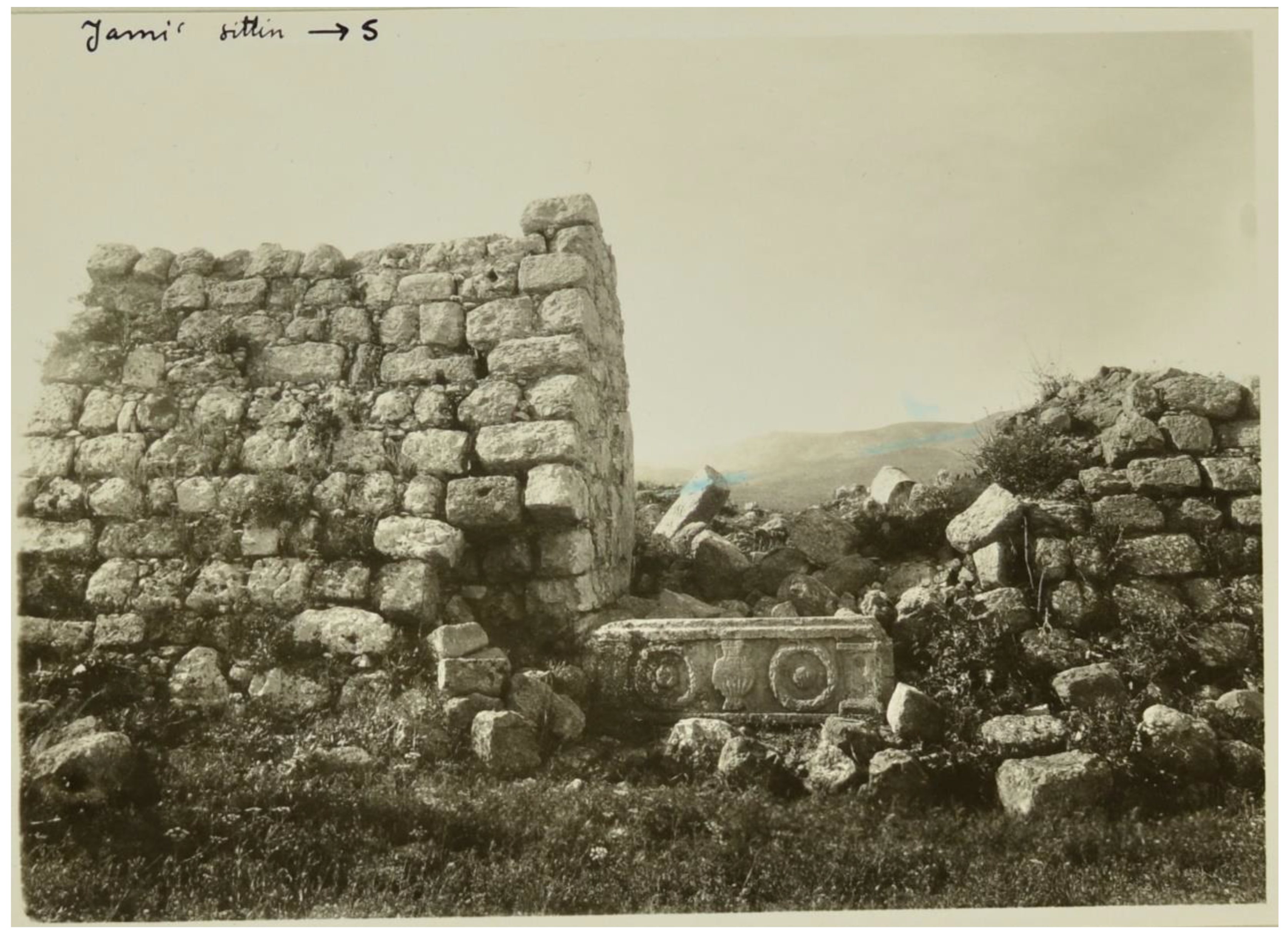
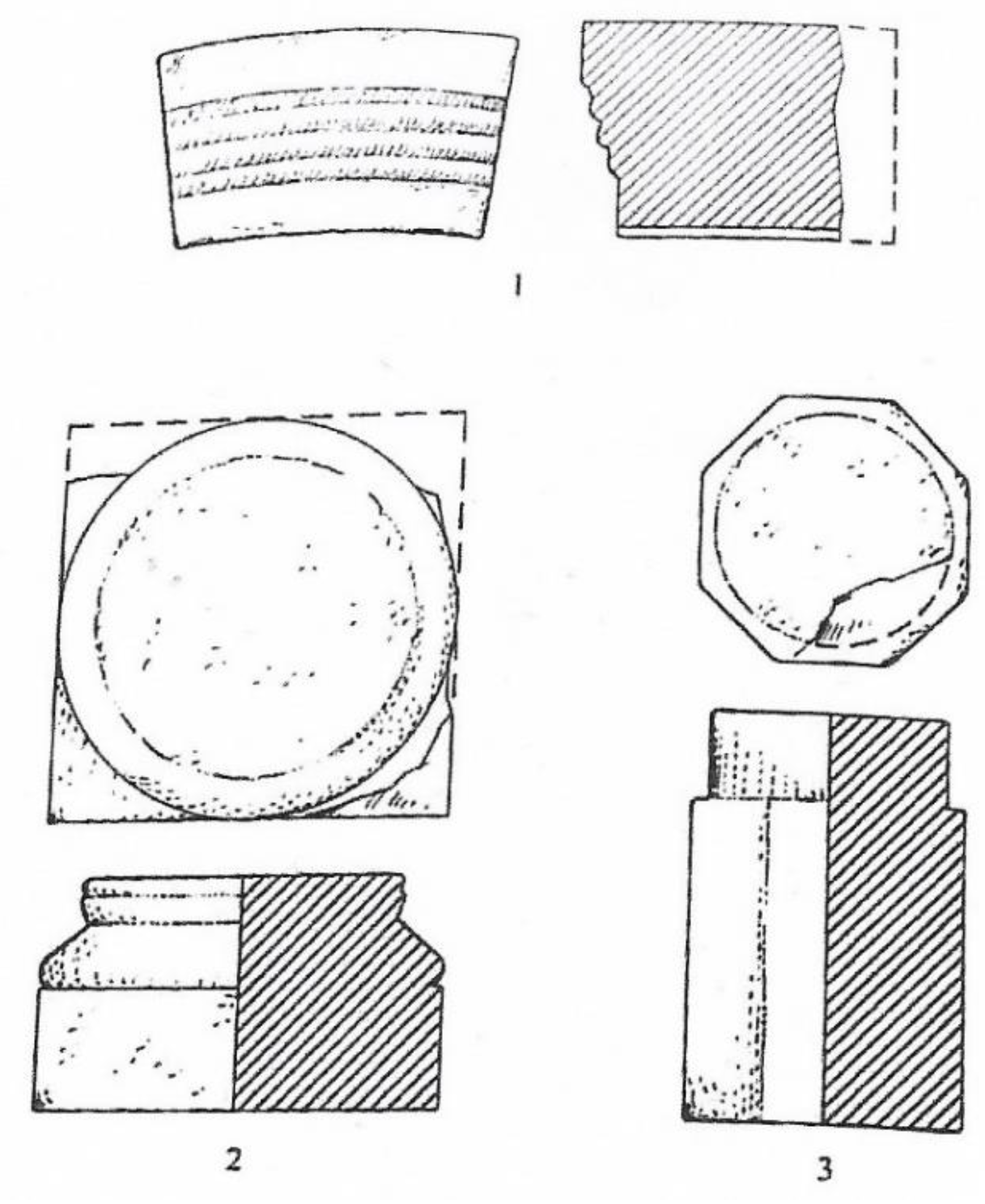
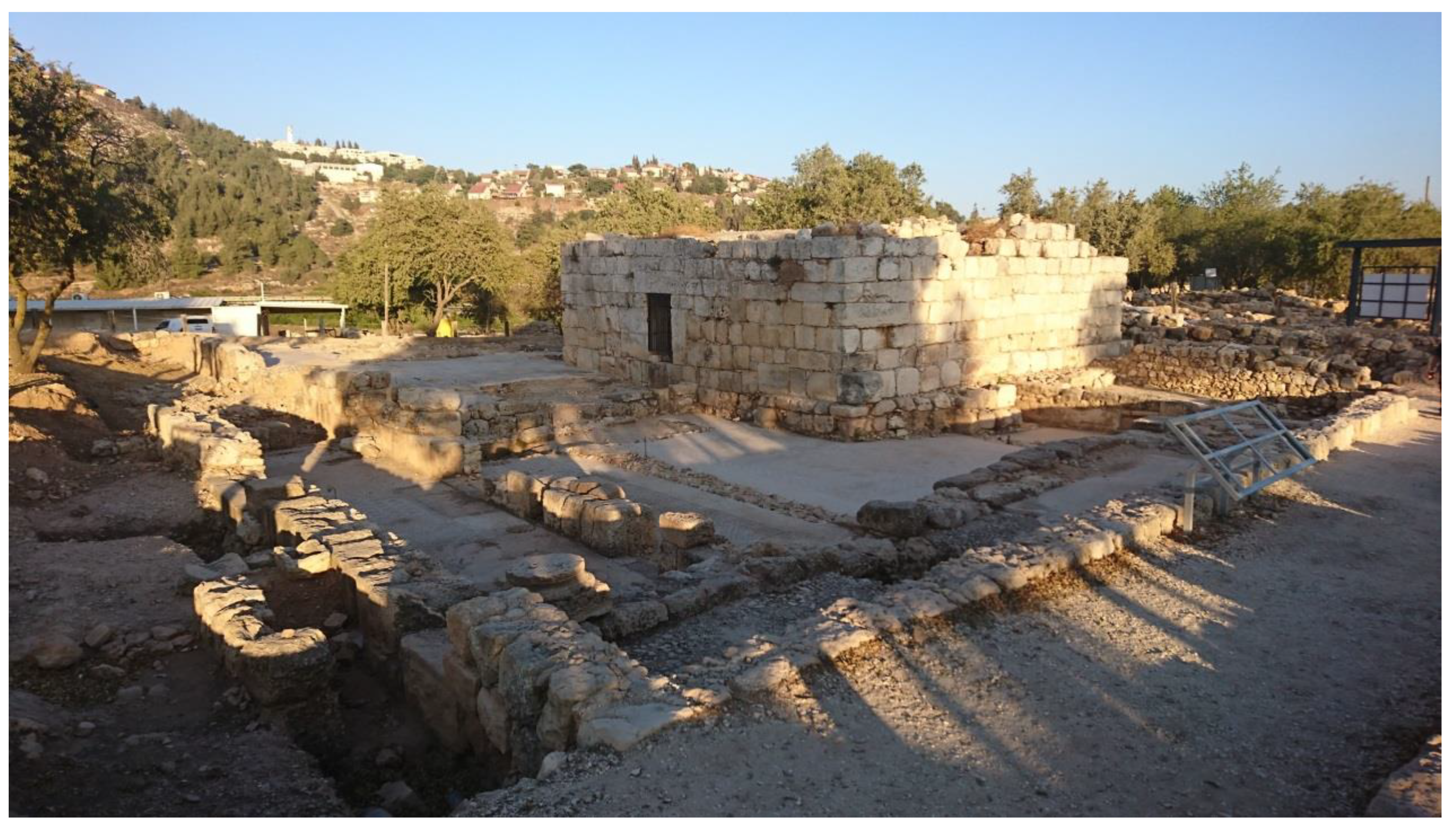
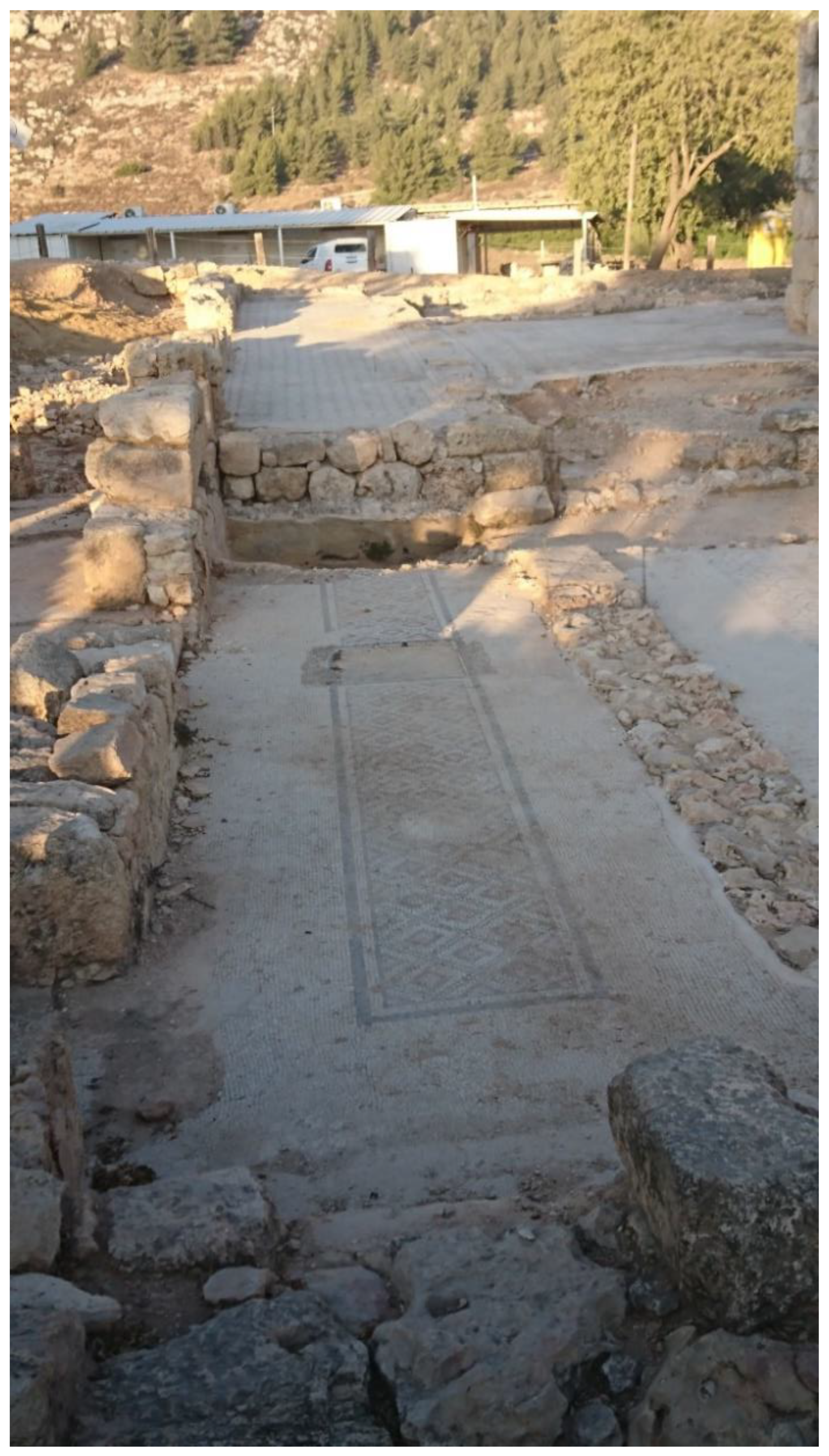
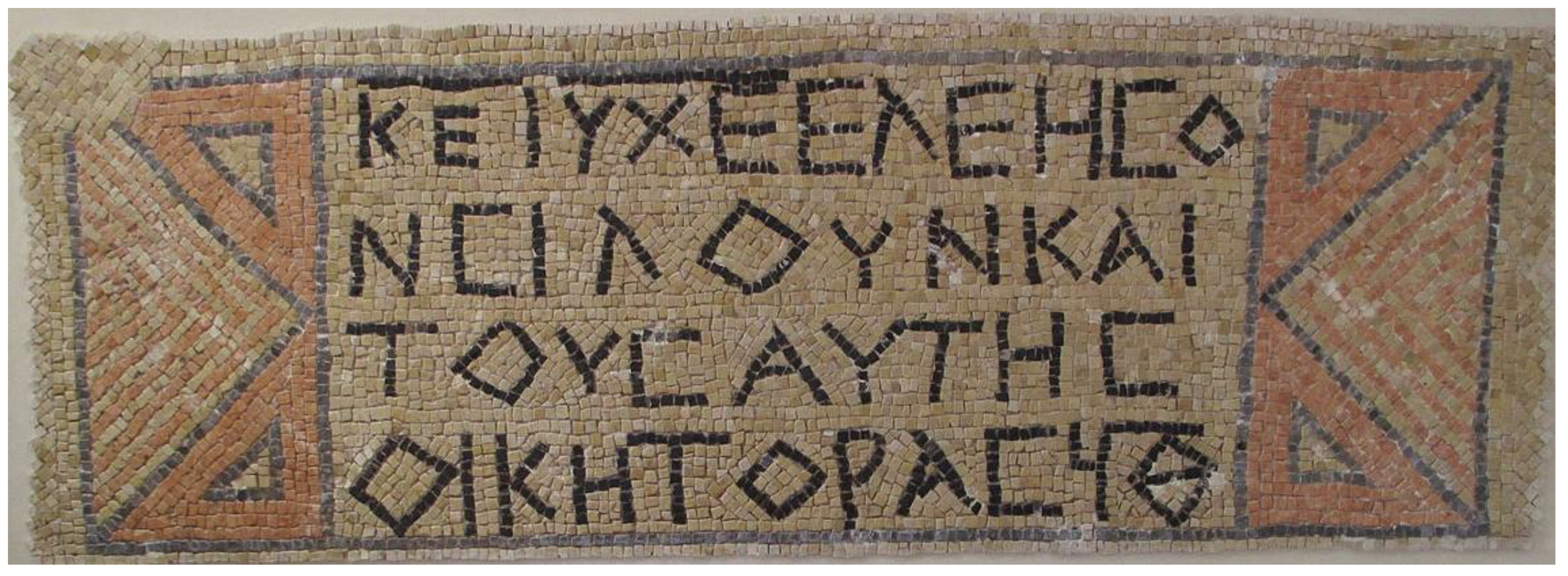
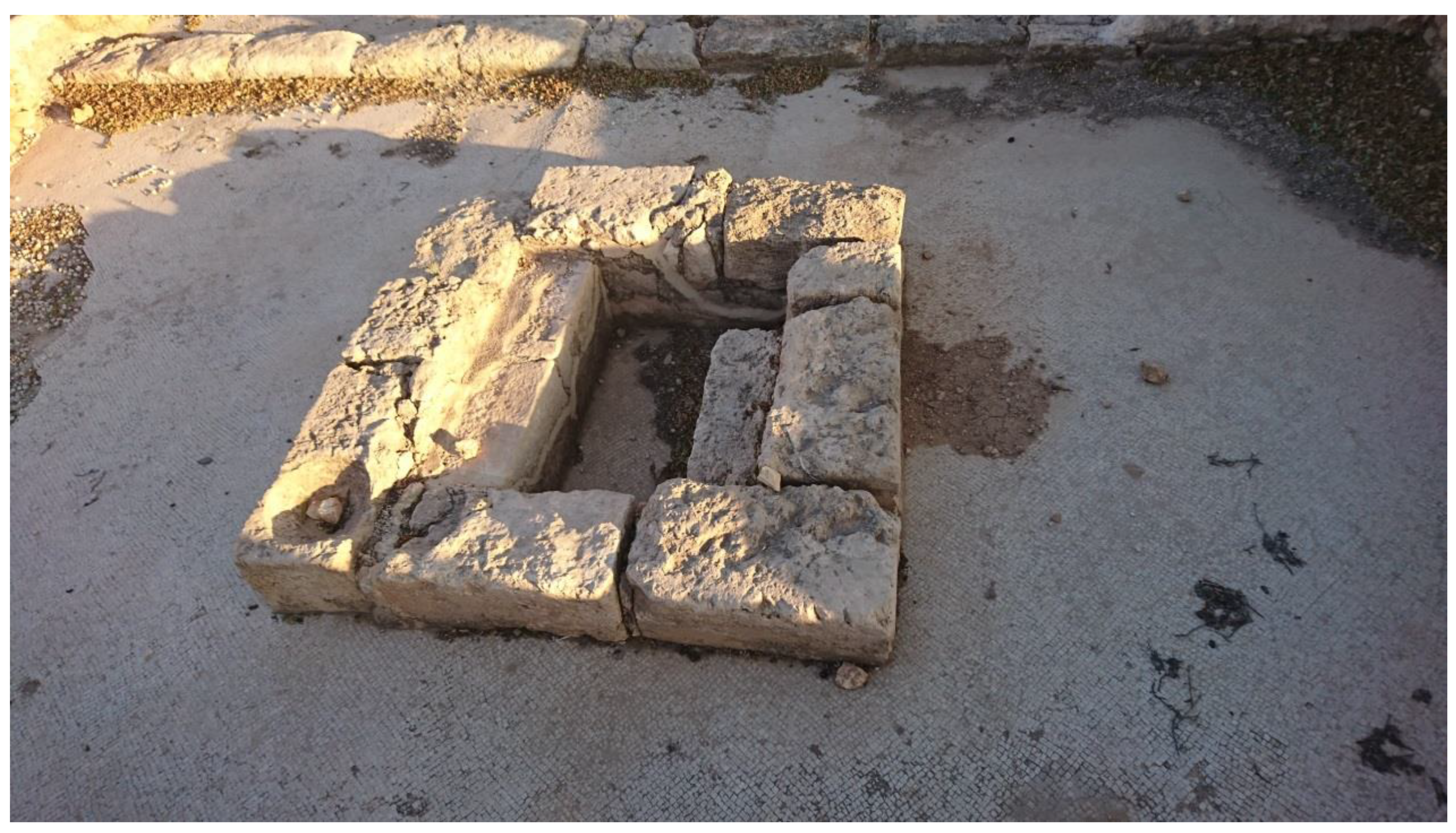
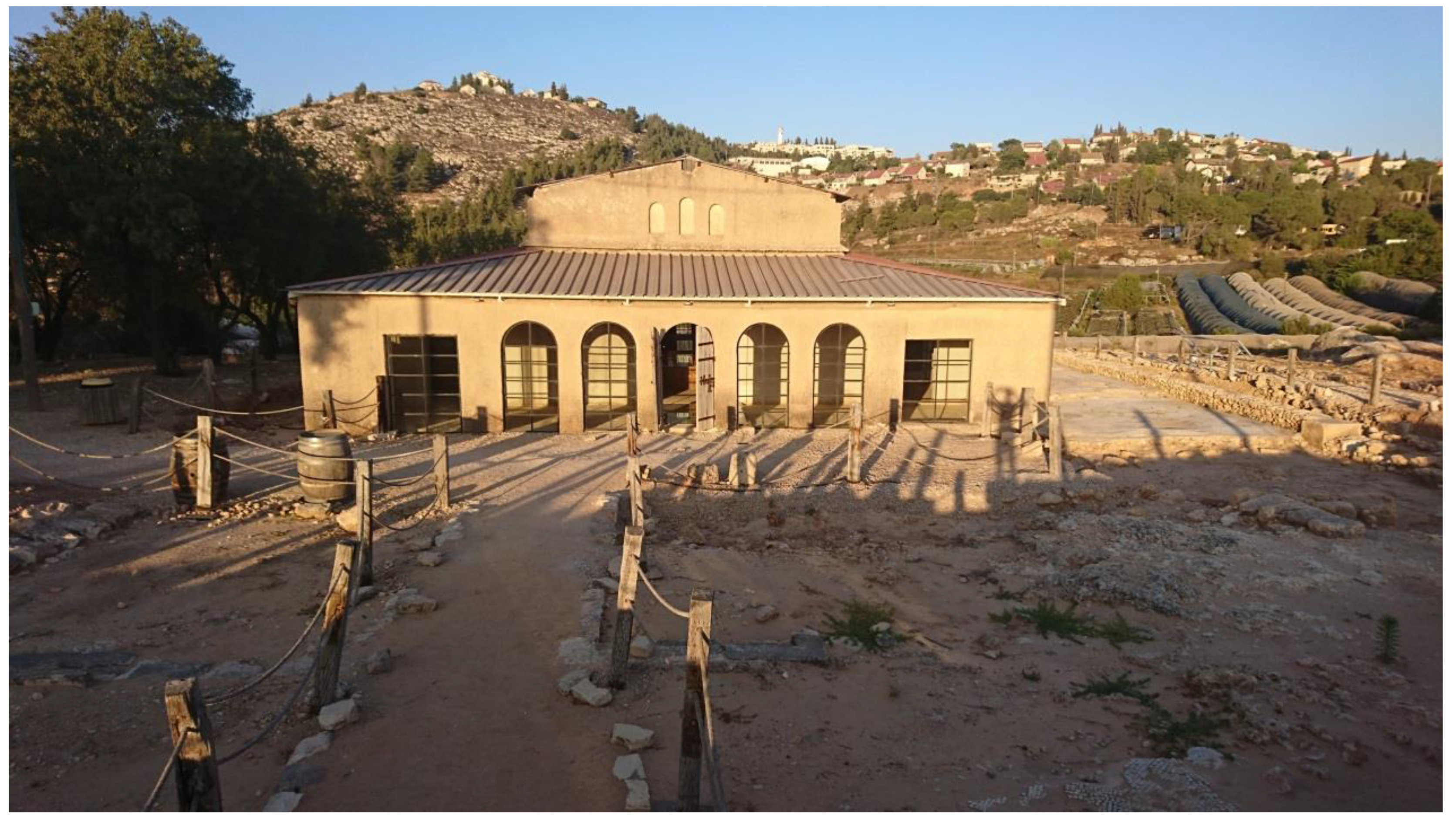
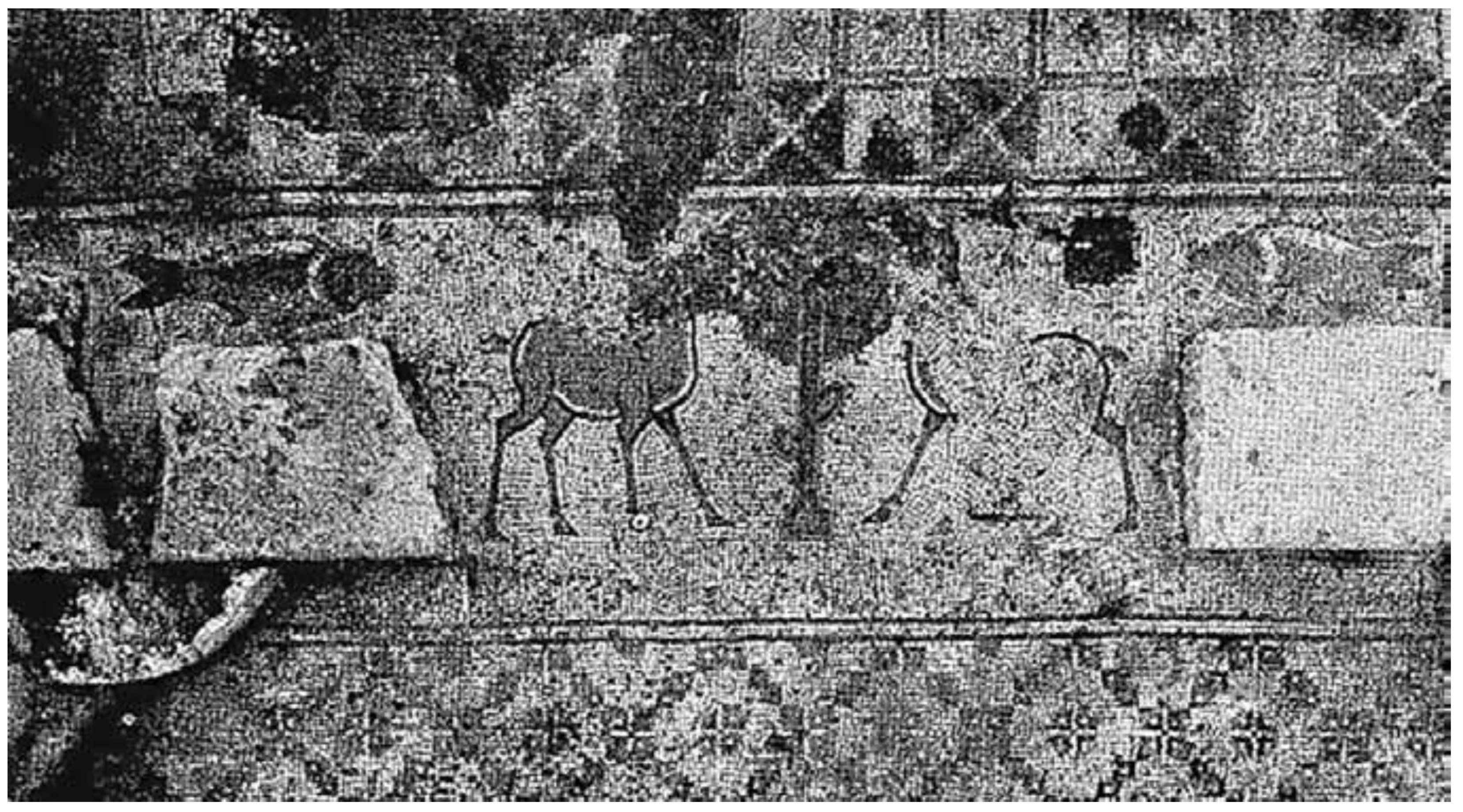
© 2019 by the authors. Licensee MDPI, Basel, Switzerland. This article is an open access article distributed under the terms and conditions of the Creative Commons Attribution (CC BY) license (http://creativecommons.org/licenses/by/4.0/).
Share and Cite
Schwartz, A.; Ofir Shemesh, A. The Cult in Shiloh during the Roman-Byzantine Period. Religions 2019, 10, 591. https://doi.org/10.3390/rel10110591
Schwartz A, Ofir Shemesh A. The Cult in Shiloh during the Roman-Byzantine Period. Religions. 2019; 10(11):591. https://doi.org/10.3390/rel10110591
Chicago/Turabian StyleSchwartz, Amichay, and Abraham Ofir Shemesh. 2019. "The Cult in Shiloh during the Roman-Byzantine Period" Religions 10, no. 11: 591. https://doi.org/10.3390/rel10110591
APA StyleSchwartz, A., & Ofir Shemesh, A. (2019). The Cult in Shiloh during the Roman-Byzantine Period. Religions, 10(11), 591. https://doi.org/10.3390/rel10110591



